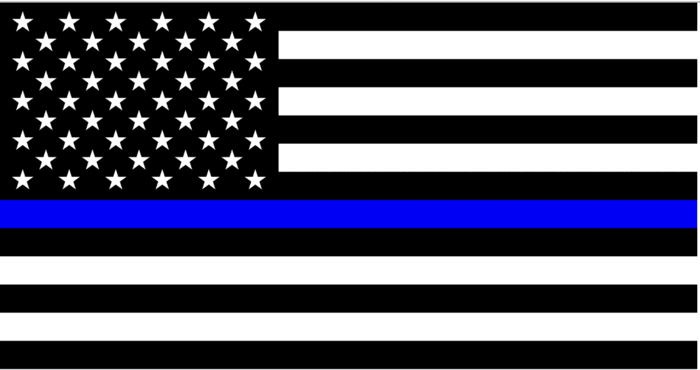Think Hard Before Banning the Logos that Cops Use
Don’t Forget Irony, Context, Metaphor, and Fantasy Matter to this discussion
Punisher Logo Photo: (Pwnznomercy, Creative Commons Attribution-Share Alike 4.0)
I recently read a social media discussion among law enforcement professionals regarding cops’ use of the “Punisher” logo, which a command staffer banned from the police department Training Section he commands.
The Punisher is a Marvel Comics character, a former Marine Corps Sniper turned vigilante after criminals murdered his wife and son.
I knew that command staffer when he was a student officer and partnered with him for an off-duty gig for about three years when we were officers in the early 2000s, and we got along great. He had the authority to ban this symbol, so it was his right to do it, but was it right to do it? I’m leaning toward no.
Some in the thread argued that the fictional “Punisher” behaved in ways that cops should not. Well, no shit. It’s a fantasy. It’s make-believe. It’s a comic book character. And humans often use such literary devices to relieve the stress of a difficult job. Fictional characters allows people to vent through fantasy, relieving their “negative” energy through the imaginary actions of a harmless effigy.
Marvel Comics introduced the Punisher to the world in 1974, but the late U.S. Navy SEAL sniper Chris Kyle publicized the symbol in the Clint Eastwood-directed blockbuster movie American Sniper, based on the book of the same title.
Chris Kyle, American Sniper book signing, with Punisher Logo on his hat Photo: (Cpl. Damien Gutierrez, Public domain)
And though I lean toward disagreeing with the ban, I don’t lose any sleep over it. It was the commander’s prerogative, and he was the one in that position, not me. I wasn’t feeling the pressure from community cop critics and city and department leaders above him. Still, I’d like to comment on the Punisher and similar motifs.
I think it’s easy to forget irony, context, metaphor, and fantasy and rely too heavily on the literal when caught up in these controversial issues. Again, the Punisher is a fictional character. He’s not real. He’s an allegory, a bedtime story. Through this fiction, officers who deal with criminals for a living may use the character to vent their feelings about what they’d like to do to the bad guys but never would.
Here’s a quick, recent example of this form of expression from the recent 2024 Army-Navy college football game. Navy won the game 31-13, though Army remained nationally ranked. For this “America’s Game” teams adorn players’ helmets and uniforms with symbols and motifs imbued with significant historical meanings.
One poignant logo for Navy hearkened back to a WWII U.S. Navy fighter squadron called “the Jolly Rogers.” The unit displayed the Jolly Roger flag (the infamous white skull and crossbones on a black background) on its planes, and the Navy football team displayed it on their helmets and a skull and crossbones patch on their uniform shoulders.
Flag of pirate Edward England, Samuel Bellamy Photo: (WarX, edited by Manuel Strehl, CC Attribution-Share Alike 3.0
Last I checked, these nascent Naval and Marine Corps officers are not pirates, nor will they become pirates. The team took the logo from the fighter the squadron flew, which the Navy designated a Corsair (“an old nautical term for ‘pirate’”). Like I said, don’t forget the importance of irony.
Cop critics have also attempted to similarly demonize the thin blue line flag, with some police chiefs around the nation banning it. These police leaders infused it with their adopted (from leftist cop-critics) negative version of the symbol and then pressured subordinates to believe the same.
It’s obvious that, historically, some symbols have been hijacked by evil, and we wouldn’t wear them today. Most infamously, the Nazi’s appropriation of the ancient Swastika, which many cultures had previously used to convey various meanings, including positive ones, such as in India and the Zuni Native American Indian Tribe. But there’s a big difference between the Punisher logo and the Swastika: the Punisher is fiction, the Nazis were real.
Theses distinctions are important and should be considered when making such decisions on how cops may express themselves. Especially, within the relatively private environs of training. Surrendering to a one-sided notion emanating from cop-haters, doesn’t seem like it delivers the best results for law enforcement leaders and certainly crushes morale for the rank and file cops.







